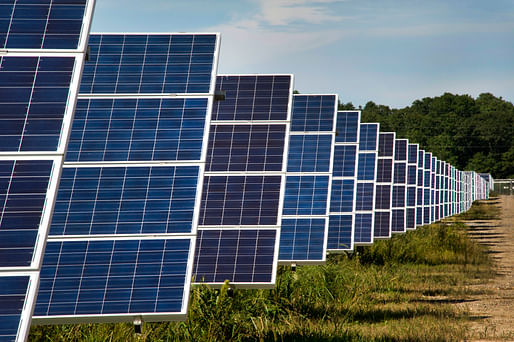

Renewable energy initiatives like building new wind and solar farms have multiplied as a global push to reinforce sustainability initiatives has taken off in recent years. However, despite the benefits for these necessary renewable energy plans, pushback from residents, as well as local governing agents, has grown in tandem.
Linda Poon of CityLab reports,"The U.S. now has a total of 2 million solar panels—half of which were installed in just the last three years—capable of generating nearly 70 gigawatts [...] But while the American public increasingly supports expanding green energy, they often don't want to see the actual facilities that would generate that power."
Poon reports that in both the West and East Coast regions of the U.S, Americans remain aggressively opposed the construction of new solar farms. Maybe these "anti-solar" attitudes are focused on aesthetics? For some, yes, but also, these concerns, according to the report, also tap into political, social, and economic fears. Poon connects with environmental politics professor Juliet Carlisle at the University of Utah and director of the Energy Democracy Initiative John Farrell for more insight. Both explain why public attitudes towards these types of energy developments have hardened in some areas.
Farrell shares, "People get really concerned about their neighborhoods changing in ways they're not familiar with [...] Part of it is not understanding that solar technology is pretty benign; there are no moving parts." Carlisle adds, "Trust matters. [You want] the sense that [residents] are being involved in the process, that developers are making sound decisions and taking into consideration local sentiments and opinions, and perception and fears."
1 Comment
I am all for integrating solar, at the decentralized building scale simply from a resilience perspective, even/especially in urban areas. I will acknowledge though, given the use of term "solar farms", real concerns about an industrial/regional-scale mono-culture of solar having a potential negative environmental impact.
Some of this came up in discussions around AMO's/OMA's "Roadmap 2050: A Practical Guide to a Prosperous, Low-Carbon Europe". Or more general concerns described by Union of Concerned Scientists and covered by YaleEnvironment360.
However there are certainly ways to address those concerns. Including ideas such as Agrivoltaic and favoring brownfield over greenfield.
Block this user
Are you sure you want to block this user and hide all related comments throughout the site?
Archinect
This is your first comment on Archinect. Your comment will be visible once approved.